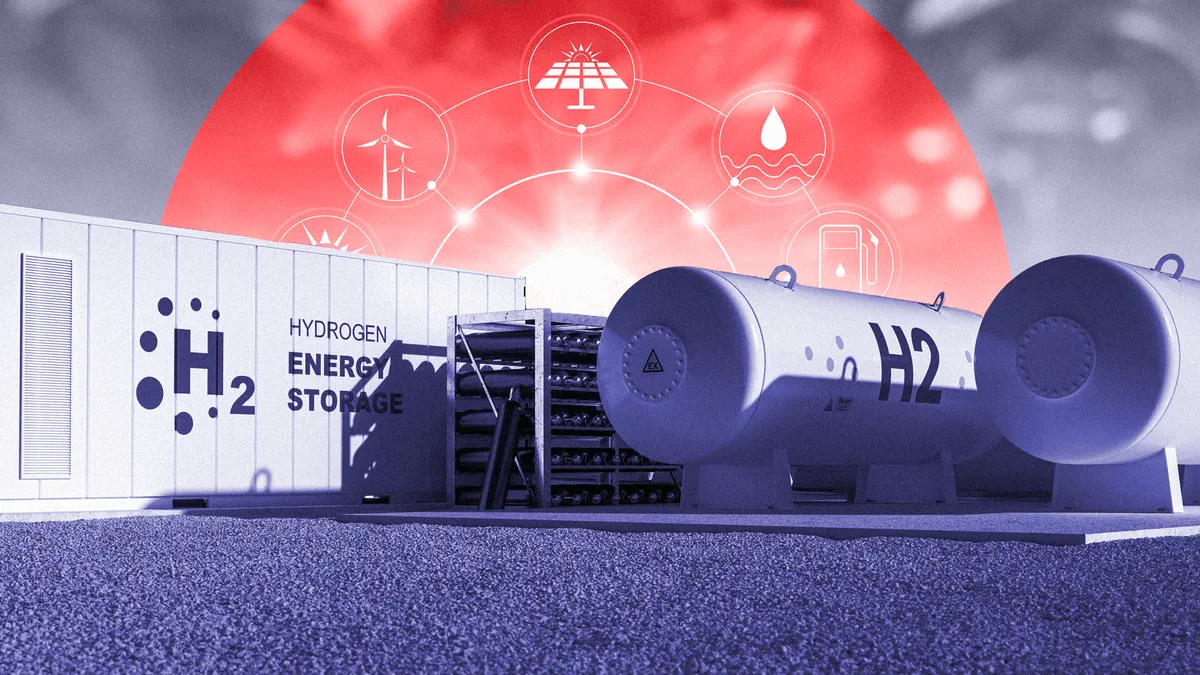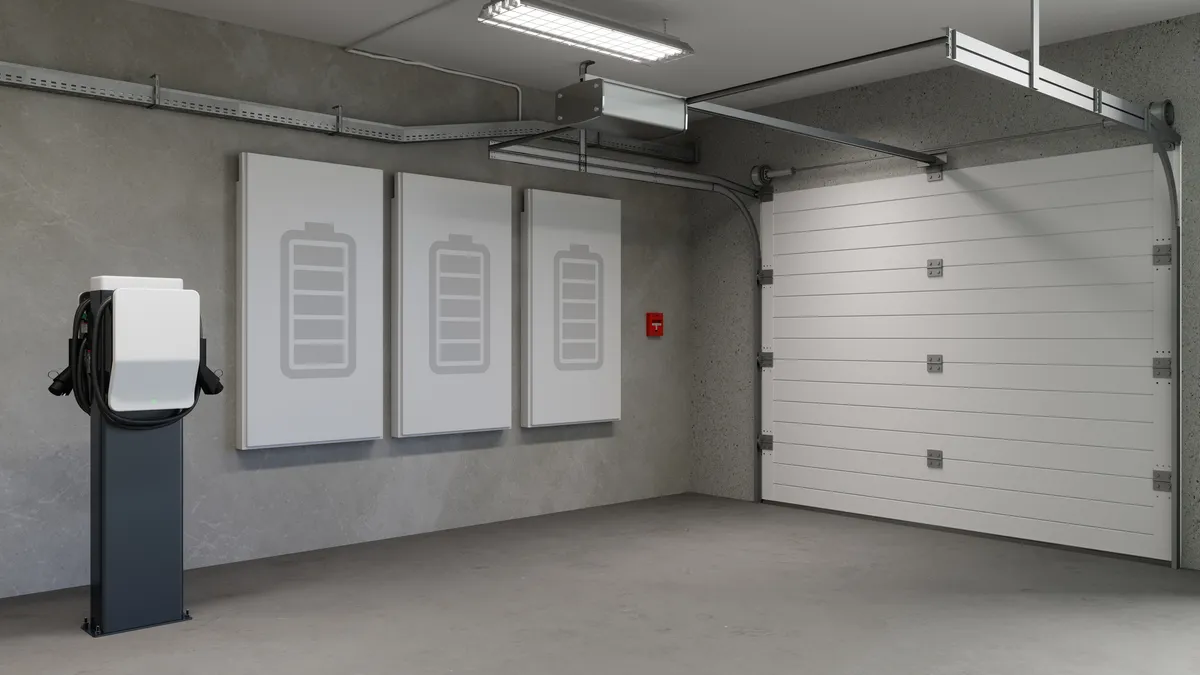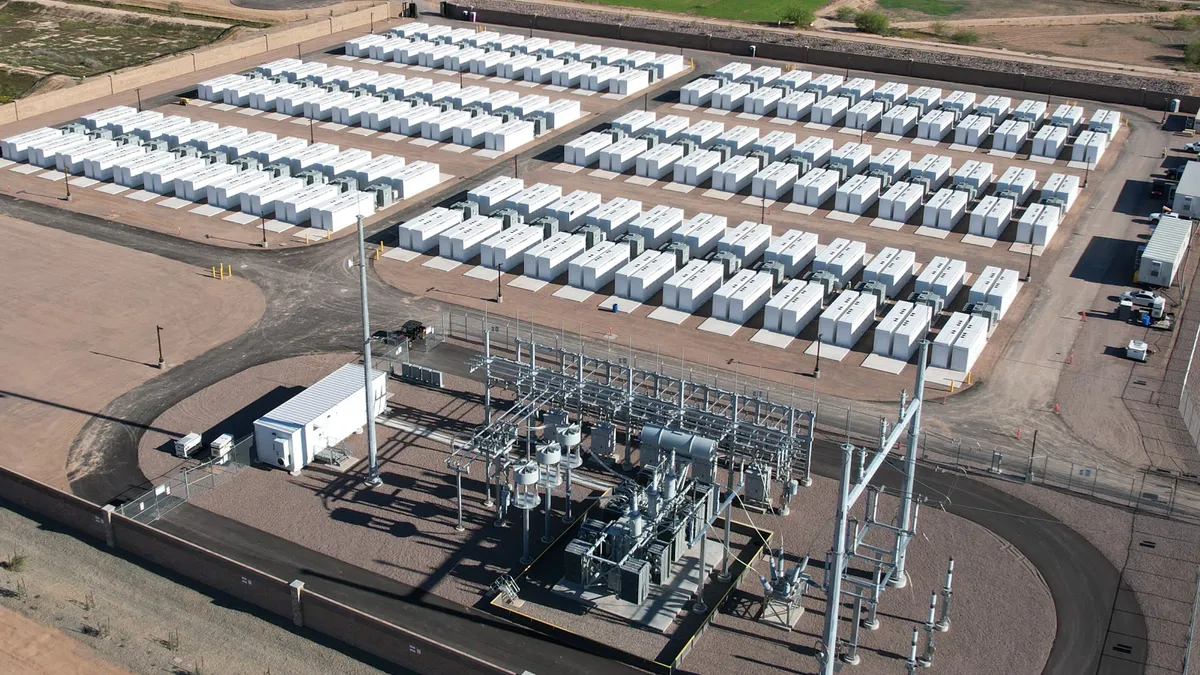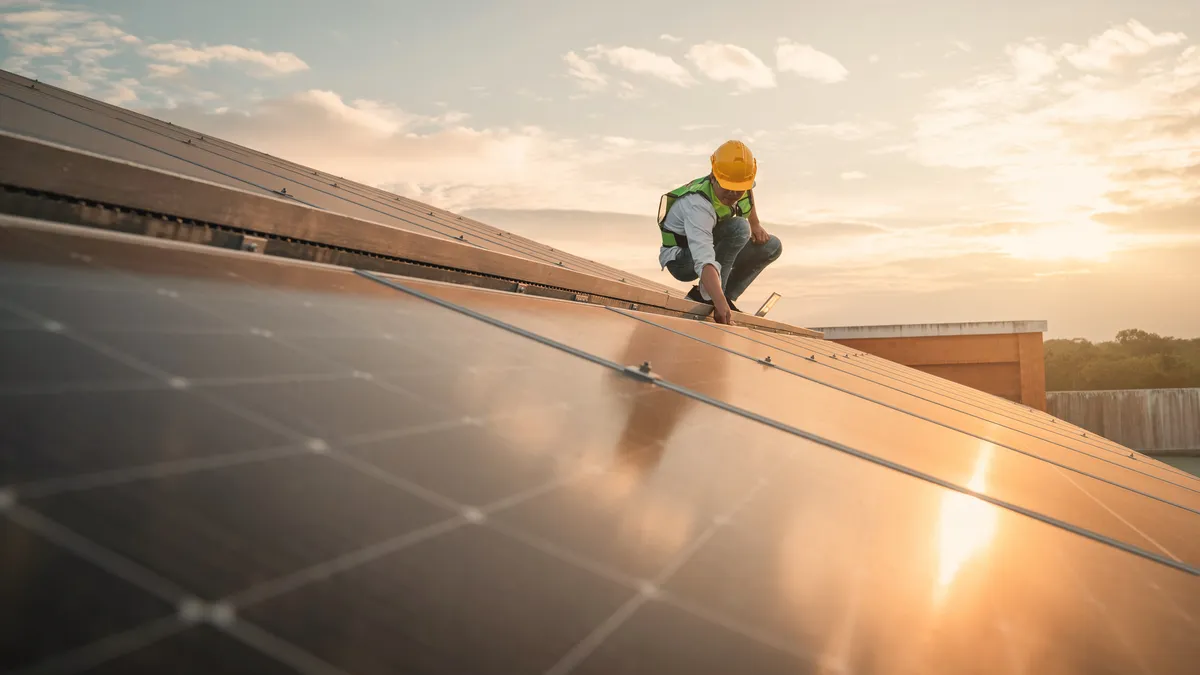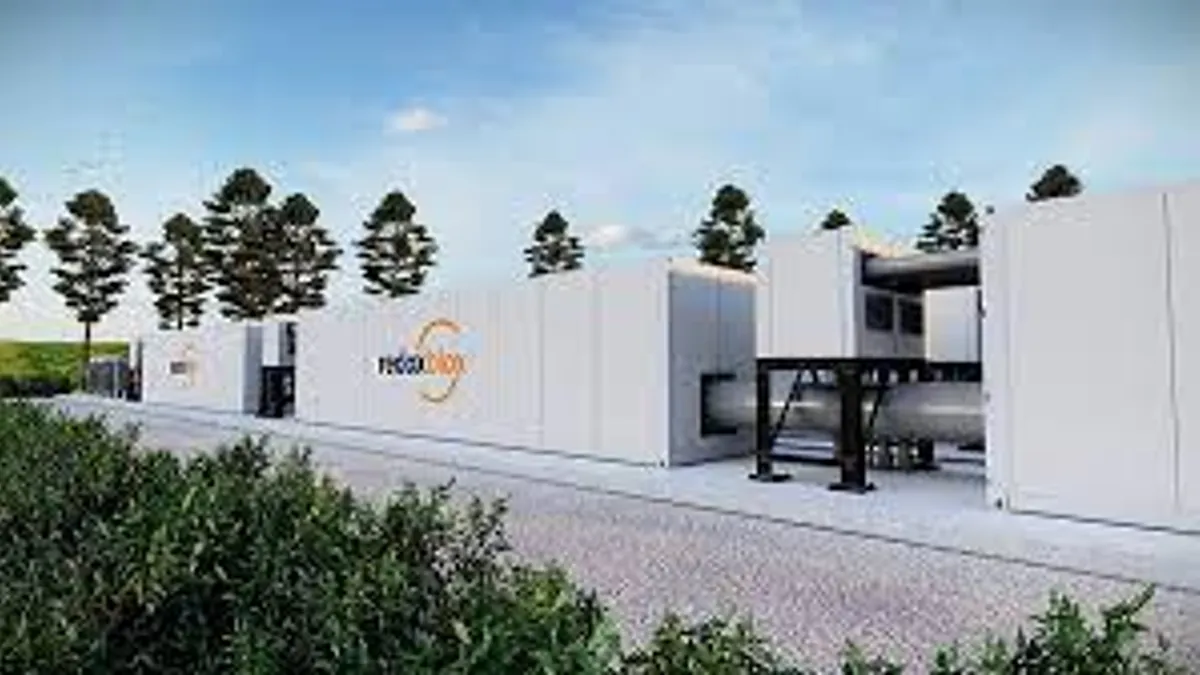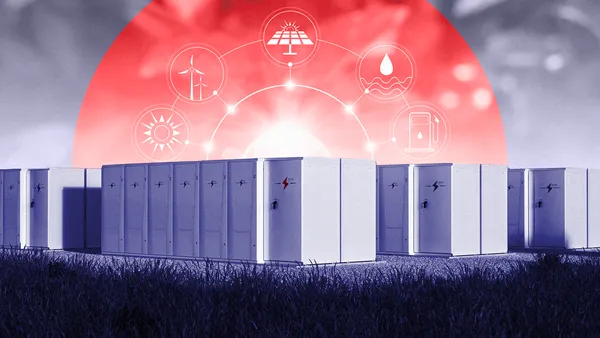Achieving the Biden administration’s goal of decarbonizing the power sector by 2035 will require a slew of energy storage technologies beyond just lithium-ion batteries, and multiple players are bringing new technology solutions to the market to fill that gap.
Lithium-ion batteries can provide four to eight hours of storage capabilities, but as the grid becomes more renewables-heavy it will require technologies with longer durations and different characteristics to mimic a “baseload” generation combination, experts say.
Globally, long-duration energy storage projects have pulled in more than $58 billion in private and public commitments since 2019, Wood Mackenzie reported at the end of last year. These investments reflect some 57 GW of long-duration storage. In the U.S., meanwhile, the Department of Energy has been focused on supporting the commercialization of this market.
“When we think about the path to net-zero, we’re going to need a lot of different technologies in our ecosystem to really get us to where we need to go,” Marlene Motyka, Deloitte’s U.S. renewable energy leader, said.
This will include lithium-ion batteries as well as what she refers to as “mid-term” duration storage, like iron-air or zinc-based batteries. In addition, the system is going to need some very long-duration – even seasonal – energy storage, that can pitch in for months at a time, like hydrogen-based storage.
Multiple players are bringing these technologies to the market, and utility regulators are showing interest in them. In May, the California Public Utilities Commission gave the green light to Pacific Gas & Electric to move forward with an 8.5 MW microgrid, comprising a hybrid battery and hydrogen fuel cell system, developed by Energy Vault and located at a Northern California substation that experiences wildfire-related outages. The system is expected to generate up to 293 MWh over a 48-hour period, according to PG&E’s filing.
Energy Vault is also working on a gravity energy storage solution, which uses a mechanical process of lifting and lowering composite blocks made from soil and waste materials to store and dispatch energy. In August, the company announced it had executed its first license and royalty agreement for the technology with an as-yet undisclosed U.S.-based renewables developer.
And in September, Dominion Energy approached Virginia regulators for approval of a storage project that will test two new technologies – iron-air batteries developed by Form Energy, which the company says can provide 100 hours of electricity storage, and zinc-hybrid batteries from Eos Energy, which can store power for anywhere between three and 12 hours.
Looking over the next decade, the electric grid is going to need a mix of storage solutions, varying from state to state depending on their electric generation portfolio and load profiles, Motyka said. But some technologies are likely to emerge as more prominent than others — for instance, because they don’t have geographical limitations.
The long-term robustness of technologies’ supply chains will also be an important factor in whether they can scale, said Craig Rizzo, managing director with Deloitte Consulting’s Energy, Resources & Industrials practice. Other factors to look at include the environmental footprint of the technology and its supply chain, as well as the reliability of the asset itself.
“Compare it to the reliability of what it will be replacing on the grid right now – natural gas generation for example. It has to be there when it’s needed,” Rizzo added.
Utility Dive examined four technologies at the forefront of the growing energy storage sector, and spoke to some of the companies bringing them to market, to get a better picture of the emerging storage landscape.
The end of each section includes a snapshot that examines one key player, how they produce the storage technology, their current and upcoming projects, and other details. The snapshots are not meant to provide a comprehensive look at each technology.
Zinc-based batteries
Zinc-based batteries have multiple characteristics that differentiate them from lithium-ion. This includes longer durations as storage, as well as the fact that the aqueous-based systems are non-flammable, Andy Meserve, vice president of business development at Eos, said. The systems experience very low degradation and can last for 20-plus years, he added — in line with the life cycle of a lot of renewable energy plants, which is typically 20 to 30 years.
“Another key component of ours is we operate in a very wide temperature range — we have no need for heating and air conditioning” unlike lithium-ion batteries, Meserve added.
These batteries could meet multiple needs in the power market, especially in terms of energy shifting or arbitrage – either storing renewables when they are plentiful on the grid and then dispatching them later on, or charging at low power prices and discharging at high ones, according to Meserve. In addition, they could play a role in microgrids, when coupled with renewables or other resources.
Like developers of other storage technologies, Eos is focused now on ramping up its manufacturing. Earlier this year, the company received an up to $398.6 million conditional loan guarantee from the Department of Energy to expand a manufacturing plant producing its zinc-powered storage systems.
Zinc-based storage does have certain benefits. The technology is flexible in sizing, and zinc is abundant as a raw material, Deloitte’s Motyka said. On the flipside, there’s only so much duration you can get out of it. Zinc-based batteries can provide up to 12 hours of duration currently and can be scaled to go much longer.
“You can keep building these modular pieces and attaching them together – but at some point, it may just not make sense because of the size,” she said.
Iron-air batteries
Form Energy’s iron-air battery systems comprise modules that are roughly the size of a washer and dryer set, with cells that include iron and air electrodes. One of the technology’s benefits is that it is built with active components that are safe, cheap and easily found, according to the company.
There’s also the multi-day duration it provides — roughly 100 hours, which means it can be a great grid reliability resource, according to Mateo Jaramillo, Form Energy’s CEO. While single-digit hour durations are also important, the grid is going to need storage in the “100-hour regime” to address longer weather-driven events, he said.
While the primary use case for iron-air batteries is currently as a reliability resource, Form Energy’s modeling indicates that the battery can be used throughout the year. The batteries can also be used by utilities and others to balance energy supply and demand week to week.
The key challenge that Form Energy currently faces in terms of scaling up its technology is to build out its manufacturing capabilities — essentially “become a manufacturing company,” Jaramillo said.
“We’re building that function very, very quickly and actively, but it is new and anytime we do something new there’s risk,” Jaramillo said.
The technology offers a lot of flexibility, and can be dispatched in a way to support the concept of baseload generation, Deloitte’s Motyka said.
“What they’re touting is much cheaper, with it lasting much longer as well in comparison to lithium-ion,” Rizzo agreed. “Certainly it all sounds good on paper. I think the key is to just see it in action here.”
Hydrogen energy storage
In late 2022, Pacific Gas & Electric came to California regulators with a proposal for a hybrid battery energy storage and hydrogen fuel cell system, to be developed by Energy Vault in a Northern California town that experiences relatively frequent power shut-offs due to wildfire risks. The utility has historically used diesel generators to meet this need, but the switch to green hydrogen and batteries allows for a cleaner source of back-up power during these outages. The microgrid is expected to come into operation in 2024.
Hydrogen-based energy storage allows the power sector to use renewable energy and electrolyzer systems to create green hydrogen, which can then be stored for as long as needed until being converted back to electricity using fuel cells. The PG&E microgrid has a 48-hour duration, with the potential to expand up to 96 hours – but hydrogen allows for the possibility to store energy for much longer periods, even seasonally.
The PG&E system uses Energy Vault’s ‘H-Vault’ platform, designed for durations starting from 24 hours to seasonal storage. The system can be deployed starting at 1 MW and is offered as a standard solution for 24, 50, and 100 hours, as well as any customizable size. In terms of the cost, with support from the Inflation Reduction Act and at 100 hours duration, the system is in line with a diesel genset, according to Marco Terruzzin, chief commercial and product officer at Energy Vault. Energy Vault has other hydrogen storage projects in the pipeline, but these have not yet been publicly disclosed.
The passage of the Inflation Reduction Act has given the technology a boost in the U.S., in part because it allows asset owners using hydrogen as a storage medium to tap into the investment tax credit, Terruzzin said.
Hydrogen’s potential to store energy for months at a time to be utilized as needed could be very important in the future, as policy-makers think about balancing the grid, Motyka said.
At the same time, one of the big challenges that hydrogen-based storage will face when it comes to deploying at scale is developing the infrastructure to support it, according to Motyka.
“A lot still has to happen with regard to the infrastructure behind the whole hydrogen ecosystem — generating it, having the right places to store it, then being able to call on it and use it,” she said.
In October, the DOE announced the selection of seven regional hydrogen hubs — with $7 billion in total funding — across the country, which are expected to jointly produce three million metric tons of hydrogen each year. That announcement is a positive step in the right direction, Motyka said.
Gravity-based storage
Using gravity as a form of energy storage has been around for a while, in the form of pumped hydropower — but using mobile masses is a relatively new concept, which Energy Vault has also been working on.
The technology essentially uses a mechanical process of lifting and lowering composite blocks made from soil and waste materials to store and dispatch energy, and Energy Vault says that it isn’t dependent on a specific topography, offers a flexible duration that can go from four to 24 hours, and has a 35-year lifespan.
The company is currently working on a 25 MW/100 MWh system just outside of Shanghai, built close to a wind farm. It is also working with Enel Green Power on a 18 MW/ 36 MWh gravity-based system in Snyder, Texas, expected to come online in the fourth quarter of 2024.
In terms of likely use cases, companies that would be interested in gravity energy storage would be interested in it for a duration of at least six hours, according to Terruzzin.
“That doesn’t mean that gravity cannot be applied for four hours — but the market will be very interested, and is very interested, [in] gravity for a six-hour duration and longer,” he said.
In some ways, the idea of simple, mechanical devices for energy storage makes sense, according to Deloitte’s Rizzo.
“It’s a low environmental footprint, there’s no supply chain issues, and it can scale — you can do it at really small scale, or really large scale,” he noted.
Importantly, unlike a resource like hydrogen, gravity-based storage doesn’t have to rely on years or decades of future research, he said.
“It’s here now. So will we someday be way past raising rocks and lowering them? For sure, but as interim solutions to fill gaps where we have them right now, I think we should continue taking a close look at that,” he said.



